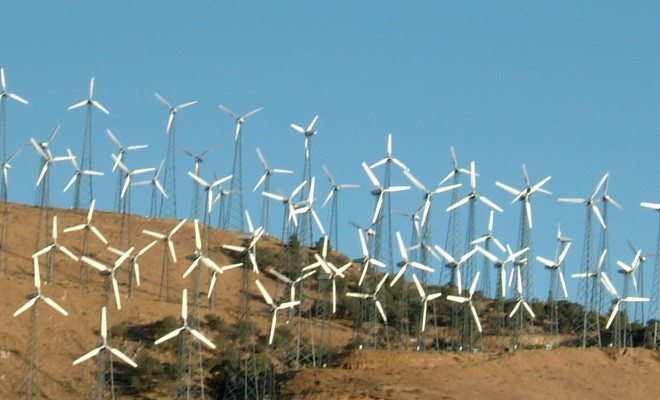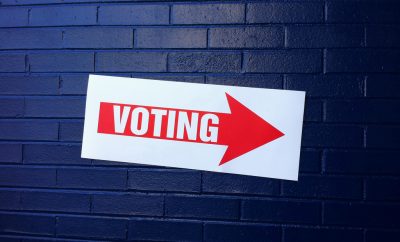
Blogs
Winds of Change: Renewable Energy Booming in Texas
If a red state known for its oil can spearhead a massive campaign in support of the installation of wind farms and restructure its economy to correspond, then there is no reason why the rest of the country cannot follow suit.
Texas is now the place to be when it comes to turbines and renewable clean energy. Bruce Selcraig explained in a Sierra Club article that politicians, including then-governor George W. Bush, deregulated the electricity industry in Texas in 1999. It was not so much motivated by environmental altruism, but by the nature of the business industry there. Investors are usually willing to make substantial investments so long as there is a reasonable expectation of profit. This is telling, though — clearly there are economic incentives to pursue renewable energy campaigns. If the government of Texas embraces and benefits from these changes, imagine the results on a national level.
Monetary returns provide the driving incentive for the wind industry in Texas on all fronts. In addition to the business-motivated profits, many private landowners are amenable to the installation of turbines on their land because of the promise of royalties. Further, corporate tax incentives and federal support have assisted substantially in wind’s ability to carve out a foothold. As long as it is fiscally advisable, it would seem that the wind will blow strong in Texas.

Harnessable Wind Energy in the US, courtesy of US Department of Energy via Wikipedia
There is a danger, though, in leaning too heavily on financial motivations for clean energy, while completely neglecting the environmental angle. In recent years, fracking and horizontal drilling have led to a reawakening of big oil and gas, especially in Texas. These industries, Selcraig points out, have historically received several billion dollars in annual support from the federal government, while wind has received less then one tenth of that amount. This disparity could widen with the recent increased attention on black gold.
Business savvy investors should understand, however, that in the long-run these non renewable sources of energy are not viable solutions. Despite the surge induced by fracking, wind energy has also been experiencing technological improvements that heighten its efficiency and viability. In 1991, the US Department of Energy speculated that North Dakota, Kansas, and Texas alone had enough wind potential to meet the country’s electricity needs. Since then, there have been many improvements to the technology. These include simple changes, such as making the shafts of turbines longer so that they reach heights where winds are stronger and steadier.
As a result of this and other changes, that same assessment now concludes that the wind capacities of those three states could satisfy the country’s energy needs. This is a bold statement, but if anything it demonstrates that wind is a more reliable and efficient energy source than most think. In addition, the technology continues to have room for growth and improvement, while non-renewable sources can only yield so much.

Large Global Wind Cells, courtesy of Wikipedia
With regard to renewable energy, the relationships between customers and utility companies vary. Thanks to the installation of new high-capacity electricity lines, a Texas panhandle wind project is on the rise. However, as New York Times journalist Matthew L. Wald illuminates, some residents are concerned that they are compelled to assume the financial risk; customers are seeing an increased monthly bill to pay for the new lines. Wald continues, however, that the efficiency wrought by the new lines will cut electricity costs by more than the increase. This dynamic ought to be conducive to encouraging more people to come on board, as it offers tangible returns.
Where in this debate are the voices of the people? The fate of the energy sector and the health of the planet ought not to be decided solely by corporations. As people become more aware of the dangers we face, and more able to voice their opinions on what to do about them, citizens will project ever increasing influence on the policy-making process. We still have a long way to go, as there are still many “climate denialists” and individuals with too jaded a nature to feel compelled to act. Some changes simply require small lifestyle adjustments. Others require dedication and major overhauls of the status quo. But the status quo is shifting, and the means of its shift continue to fall into our own hands. We must be cautious and proactive with this great responsibility. As Al Gore wrote in a Rolling Stone article,
The progressive introduction of Internet-based communication — social media, blogs, digital journalism — is laying the foundation for the renewal of individual participation in democracy, and the re-elevation of reason over wealth and power as the basis for collective decision making.
—
Franklin R. Halprin (@FHalprin) holds an MA in History & Environmental Politics from Rutgers University where he studied human-environmental relationships and settlement patterns in the nineteenth century Southwest. His research focuses on the influences of social and cultural factors on the development of environmental policy. Contact Franklin at staff@LawStreetMedia.com.
Featured image courtesy of [Chuck Coker via Flickr]








Comments